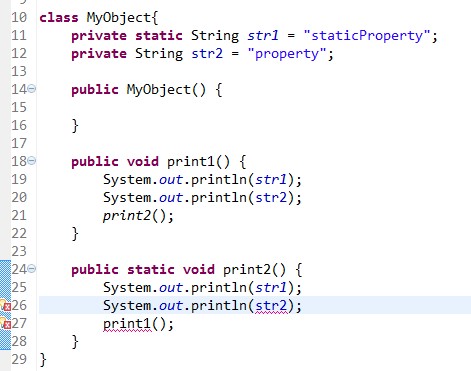LeetCode题解——栈和队列
文章目录
- 用栈实现队列
- 解法
- 用队列实现栈
- 解法
- 最小栈
- 解法
- 有效的括号
- 解法
- 每日温度
- 解法
- 下一个更大元素 II
- 解法
- 推荐阅读
用栈实现队列
使用栈实现队列的下列操作:
push(x) -- 将一个元素放入队列的尾部。pop() -- 从队列首部移除元素。peek() -- 返回队列首部的元素。empty() -- 返回队列是否为空。示例:MyQueue queue = new MyQueue();queue.push(1);queue.push(2);queue.peek(); // 返回 1queue.pop(); // 返回 1queue.empty(); // 返回 false说明:你只能使用标准的栈操作 -- 也就是只有 push to top, peek/pop from top, size, 和 is empty 操作是合法的。你所使用的语言也许不支持栈。你可以使用 list 或者 deque(双端队列)来模拟一个栈,只要是标准的栈操作即可。假设所有操作都是有效的 (例如,一个空的队列不会调用 pop 或者 peek 操作)。
解法
class MyQueue {/** Initialize your data structure here. */public MyQueue() {}private Deque<Integer> in = new LinkedList<>();private Deque<Integer> out = new LinkedList<>();/** Push element x to the back of queue. */public void push(int x) {in.addFirst(x);}/** Removes the element from in front of queue and returns that element. */public int pop() {in2out();return out.removeFirst();}/** Get the front element. */public int peek() {in2out();return out.peekFirst();}/** Returns whether the queue is empty. */public boolean empty() {return out.isEmpty() && in.isEmpty();}private void in2out() {if (out.isEmpty()) {while(!in.isEmpty()) {out.addFirst(in.removeFirst());}}}}/*** Your MyQueue object will be instantiated and called as such:* MyQueue obj = new MyQueue();* obj.push(x);* int param_2 = obj.pop();* int param_3 = obj.peek();* boolean param_4 = obj.empty();*/
用队列实现栈
使用队列实现栈的下列操作:
push(x) -- 元素 x 入栈pop() -- 移除栈顶元素top() -- 获取栈顶元素empty() -- 返回栈是否为空注意:你只能使用队列的基本操作-- 也就是 push to back, peek/pop from front, size, 和 is empty 这些操作是合法的。你所使用的语言也许不支持队列。 你可以使用 list 或者 deque(双端队列)来模拟一个队列 , 只要是标准的队列操作即可。你可以假设所有操作都是有效的(例如, 对一个空的栈不会调用 pop 或者 top 操作)。
解法
class MyStack {Deque<Integer> queue;/** Initialize your data structure here. */public MyStack() {queue = new LinkedList<>();}/** Push element x onto stack. */public void push(int x) {queue.offer(x);int size = queue.size();while (size-- > 1) {queue.offer(queue.poll());}}/** Removes the element on top of the stack and returns that element. */public int pop() {return queue.poll();}/** Get the top element. */public int top() {return queue.peek();}/** Returns whether the stack is empty. */public boolean empty() {return queue.isEmpty();}}/*** Your MyStack object will be instantiated and called as such:* MyStack obj = new MyStack();* obj.push(x);* int param_2 = obj.pop();* int param_3 = obj.top();* boolean param_4 = obj.empty();*/
最小栈
设计一个支持 push ,pop ,top 操作,并能在常数时间内检索到最小元素的栈。
push(x) —— 将元素 x 推入栈中。pop() —— 删除栈顶的元素。top() —— 获取栈顶元素。getMin() —— 检索栈中的最小元素。示例:输入:["MinStack","push","push","push","getMin","pop","top","getMin"][[],[-2],[0],[-3],[],[],[],[]]输出:[null,null,null,null,-3,null,0,-2]解释:MinStack minStack = new MinStack();minStack.push(-2);minStack.push(0);minStack.push(-3);minStack.getMin(); --> 返回 -3.minStack.pop();minStack.top(); --> 返回 0.minStack.getMin(); --> 返回 -2.提示:pop、top 和 getMin 操作总是在 非空栈 上调用。
解法
class MinStack {private Deque<Integer> stack;private Deque<Integer> minStack;private int min;/** initialize your data structure here. */public MinStack() {stack = new LinkedList<>();minStack = new LinkedList<>();min = Integer.MAX_VALUE;}public void push(int x) {stack.offerFirst(x);min = Math.min(min, x);minStack.offerFirst(min);}public void pop() {stack.pollFirst();minStack.pollFirst();min = minStack.isEmpty() ? Integer.MAX_VALUE : minStack.peekFirst();}public int top() {return stack.peekFirst();}public int getMin() {return minStack.peekFirst();}}/*** Your MinStack object will be instantiated and called as such:* MinStack obj = new MinStack();* obj.push(x);* obj.pop();* int param_3 = obj.top();* int param_4 = obj.getMin();*/
有效的括号
给定一个只包括 ‘(’,’)’,’{’,’}’,’[’,’]’ 的字符串,判断字符串是否有效。
有效字符串需满足:
左括号必须用相同类型的右括号闭合。
左括号必须以正确的顺序闭合。
注意空字符串可被认为是有效字符串。
示例 1:输入: "()"输出: true示例 2:输入: "()[]{}"输出: true示例 3:输入: "(]"输出: false示例 4:输入: "([)]"输出: false示例 5:输入: "{[]}"输出: true
解法
class Solution {public boolean isValid(String s) {Deque<Character> stack = new LinkedList<>();for (char c : s.toCharArray()) {if (c == '(' || c == '[' || c == '{') {stack.addFirst(c);} else {if (stack.isEmpty()) {return false;}char tmp = stack.removeFirst();boolean flag1 = c == ')' && tmp != '(';boolean flag2 = c == ']' && tmp != '[';boolean flag3 = c == '}' && tmp != '{';if (flag1 || flag2 || flag3) {return false;}}}return stack.isEmpty();}}
每日温度
请根据每日 气温 列表,重新生成一个列表。对应位置的输出为:要想观测到更高的气温,至少需要等待的天数。如果气温在这之后都不会升高,请在该位置用 0 来代替。
例如,给定一个列表 temperatures = [73, 74, 75, 71, 69, 72, 76, 73],你的输出应该是 [1, 1, 4, 2, 1, 1, 0, 0]。
提示:气温 列表长度的范围是 [1, 30000]。每个气温的值的均为华氏度,都是在 [30, 100] 范围内的整数。
解法
class Solution {public int[] dailyTemperatures(int[] T) {int n = T.length;int[] dist = new int[n];Deque<Integer> stack = new LinkedList<>();for (int curIndex = 0; curIndex < n; curIndex++) {while (!stack.isEmpty() && T[curIndex] > T[stack.peekFirst()]) {int preIndex = stack.pollFirst();dist[preIndex] = curIndex - preIndex;}stack.addFirst(curIndex);}return dist;}}
下一个更大元素 II
给定一个循环数组(最后一个元素的下一个元素是数组的第一个元素),输出每个元素的下一个更大元素。数字 x 的下一个更大的元素是按数组遍历顺序,这个数字之后的第一个比它更大的数,这意味着你应该循环地搜索它的下一个更大的数。如果不存在,则输出 -1。
示例 1:输入: [1,2,1]输出: [2,-1,2]解释: 第一个 1 的下一个更大的数是 2;数字 2 找不到下一个更大的数;第二个 1 的下一个最大的数需要循环搜索,结果也是 2。注意: 输入数组的长度不会超过 10000。
解法
class Solution {public int[] nextGreaterElements(int[] nums) {int n = nums.length;int[] next = new int[n];Arrays.fill(next, -1);Deque<Integer> stack = new LinkedList<>();for (int i = 0; i < n * 2; i++) {int num = nums[i % n];while (!stack.isEmpty() && nums[stack.peekFirst()] < num) {next[stack.pollFirst()] = num;}if (i < n) {stack.addFirst(i);}}return next;}}
推荐阅读
- 机器学习资料汇总
- 吴恩达《机器学习》视频、作业、源码
- 106页《Python进阶》中文版正式发布
- 李航《统计学习方法》第二版完整课件
- 机器学习数学全书,1900页PDF下载


































还没有评论,来说两句吧...